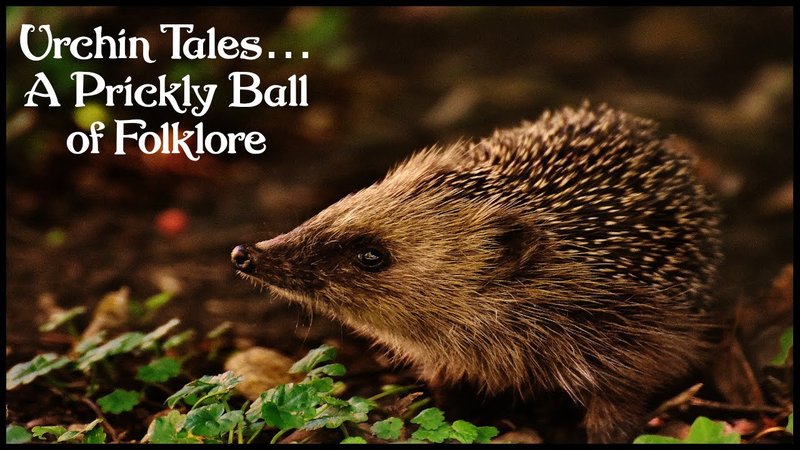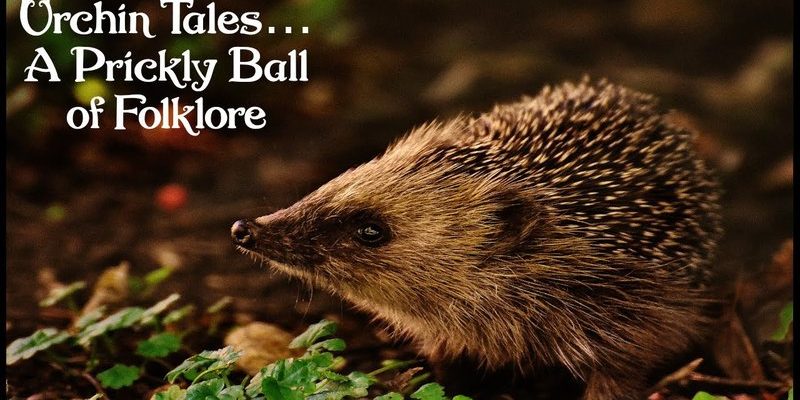
Let’s take a moment to journey through the fascinating world where these prickly little creatures play important roles in tales, art, and symbolism. Just as you might find a familiar dish in a family recipe book, the hedgehog has cropped up in folklore, literature, and even modern media, each time offering a unique perspective on its characteristics and qualities. Trust me, it’s a journey worth taking!
Hedgehogs in Ancient Folklore
In many ancient cultures, hedgehogs were surrounded by various myths and legends. For instance, in Europe, they often represented protection. Imagine a tiny creature that can curl up and shield itself with those hard spines! This clever defense mechanism made them symbols of guardianship. Some folklore suggests that hedgehogs would roll around eating harmful pests, thus protecting crops and gardens.
Moreover, Celtic mythology sees hedgehogs as beings that guide souls. They were thought to be wise enough to carry messages between the living and the afterlife. Wouldn’t it be interesting to think of hedgehogs as tiny messengers, quietly traversing the earth carrying important news? This aspect of their folklore showcases how deeply intertwined their story is with human life and beliefs.
Hedgehogs in Literature
Literature, too, has embraced the hedgehog. One of the most notable examples is in Aesop’s fables. In the tale of “The Hedgehog and the Fox,” the little hedgehog symbolizes cleverness and resourcefulness against the cunning fox. This story illustrates how sometimes, simple wisdom can outsmart flashy intelligence.
You might also recognize hedgehogs from children’s literature. They often appear in stories as loving, friendly creatures, teaching valuable lessons about friendship and kindness. Think of characters like the beloved Hedgehog from “The Little Prince,” who teaches that real connections come from the heart. In these tales, they embody warmth and loyalty, reminding us of the importance of companionship.
Symbolism of Hedgehogs in Various Cultures
Across cultures, hedgehogs symbolize different concepts. In ancient Egypt, they were seen as protectors of crops, due to their diet of pests. Their spiky appearance became a metaphor for defense and courage.
In some Native American tribes, hedgehogs were believed to possess healing powers. It’s a fascinating thought that these tiny creatures, with their prickly exteriors, were seen as bearers of health and well-being. Besides, in Japanese culture, the hedgehog (or “harinezumi”) is often associated with good fortune. Imagine a hedgehog bringing positive vibes to your home and garden. Isn’t that a fun way to think of them?
The Hedgehog in Modern Media
Fast forward to today, hedgehogs are everywhere in media. From video games like Sonic the Hedgehog, which portrays a speedy blue hedgehog on epic adventures, to children’s books and animated films, these little critters capture hearts across all ages.
Sonic, the cute blue hedgehog we all know, has become an icon, symbolizing speed and heroism. He shows us that even small creatures can achieve great things. This modern take reinforces previous cultural representations — that hedgehogs are not just adorable but also embody courage and tenacity.
Hedgehogs in Art and Crafts
Art has also embraced the charm of hedgehogs. From paintings with whimsical hedgehog designs to adorable plush toys, artists capture their uniqueness. Hedghogs are often depicted in art with a cozy, friendly vibe, giving audiences a sense of warmth and nostalgia.
Crafts involving hedgehogs have also gained popularity, especially in home decor. You might find cute hedgehog figurines or illustrations framing your favorite spaces. They represent comfort and a connection to the natural world. Isn’t it lovely to think that something as simple as a hedgehog can evoke such creativity and warmth?
Folklore and Wildlife Conservation
Interestingly, the representation of hedgehogs also plays a role in wildlife conservation. As symbols of nature, they remind us of the importance of protecting our environment. In many cultures, the decline of hedgehog populations has led to stories and campaigns aimed at raising awareness about wildlife protection.
For instance, in the UK, hedgehogs have become a beloved mascot for various conservation efforts. These small creatures draw attention to the impacts of habitat loss and climate change. Just like in those old stories where they protect gardens, hedgehogs now symbolize the need for guardianship over our natural landscapes.
The Hedgehog’s Role in Personal Identity
For many, hedgehogs have become personal symbols. People adopt hedgehogs as pets, finding joy in their quirky behaviors and charming personalities. This, in turn, fosters a greater appreciation for wildlife.
Having a pet hedgehog can also signify embracing uniqueness. Just like the hedgehog’s ability to protect itself with its spines, people often find inspiration in their quirky traits. The hedgehog stands as a reminder to celebrate individuality while being mindful of personal boundaries.
Final Thoughts on Hedgehogs in Culture
Hedgehogs are more than just adorable creatures; they represent a rich tapestry of stories, symbols, and cultural significance. From ancient myths to contemporary characters, these little beings remind us of the charm found in vulnerability and resilience.
So, the next time you see a hedgehog—whether in a book, a video game, or a garden—take a moment to appreciate everything it embodies. Whether it’s protection, friendship, or even individuality, the humble hedgehog enriches our cultural landscape, reminding us of the interconnectedness of life and stories.

